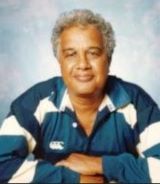The Royal-Thomian Cricket Match: Its History–by Michael Roberts

Source:Thuppahis
Uthpala Wijesuriya, in The Island, 17 March 2023,where the title presented is “The Earth’s Greatest Rivalry” … while the highlighting in this presentation has been imposed by a Thuppahiyaaaaaaaaa.
The Royal-Thomian or the Battle of the Blues, the world’s second oldest uninterrupted cricket battle, will unveil for the 144th consecutive year this week. The encounter pits the boys bearing the crests of the Elephant and Palm Tree against those bearing the Cross and Dove.
The Royal-Thomian is in many ways greater and more epic than the three matches that can be most favorably compared to it: St Peters–Prince Alfred in Australia, Eton–Harrow in Britain, and the Ashes. This is particularly so in the annals of schoolboy cricket in Sri Lanka. Indeed, the history of Sri Lankan cricket cannot be written without the Battle of the Blues.
Chandana Panditharathna once observed, “The magic of the match has been retained through colonialism, world wars, independence, nationalism and yes, even terrorism.” Recently the tradition continued despite the Covid-19 pandemic and the economic crisis.
How did it all begin? An old boy of Westminster College and a graduate of the University of Cambridge came to the Colombo Academy in 1876 as a mathematics tutor. Soon he was appointed as Boarding Master at the school. This well experienced person sacrificed his time and expended his energy to develop cricket there. Having achieved his aim, he wrote a letter to the Sub Warden of S. Thomas’ College, suggesting an inter-collegiate encounter.
This talented tutor and cricketer, who initiated the big tradition, was Ashley Walker. He would later be called the Father of Ceylonese cricket.Though the first official encounter between the two schools was held in 1880, clashes between representatives of the two institutions had been held earlier.
Cycle Parade
The match between the Colombo Academy and the College of St. Thomas the Apostle, Mutwal was known as “Academy vs. College Match” those days. After playing several matches at the Slave Island Green, in 1879 the first fully recorded fixture was held at Galle Face.
The Colombo Academy was then captained by Ashley Walker and the College of St. Thomas the Apostle was captained by Reverend S. J. Meyrick. Archibald Campbell of the Academy and the Reverend W. Falkner of the College also played as masters.
The two teams travelled by canoes through the Beira Lake with their gear. The Principal of Colombo Academy, John Barnabas Cull, declared a half day holiday. On that occasion, the Academy won the toss and elected to bat. The openers were de Silva and Van Cuylenburg. The Academy emerged as the winner, grabbing all six stumps.
The first official encounter took place in 1880 with only students. The Academy Team was captained by J. W. Silva and the College Team by F. W. McDonell. The Academy managed to retain victory with a 62-run lead. Since then, it has been a journey of success, a journey of friendly rivalry.
After giving birth to the island’s oldest cricket encounter, Walker proposed an encounter between the Ceylonese and local British officials, an episode that Nicholas Brookes has referred to in his book, “An Island’s Eleven.” 10 out of the 11 in the Team he founded came from either Royal or S. Thomas’. One can even consider this as the island’s first national cricket team.
Malinda Seneviratne once observed that “the Royal-Thomian was not just a big match. It was THE BIG MATCH.” In 1979, this historical tradition celebrated its centenary. The Royal Team played under the captaincy of Ranjan Madugalle (who captained the Sri Lanka Team) and the S. Thomas’ Team played under the captaincy of Johan Peiris. It was after this that permission to hold the encounter for three days was granted, by the then President J. R. Jayewardene.
After Galle Face Green, the encounter was hosted in eventual succession at the Nomads Cricket Club in Victoria Park, the Colombo Oval, the Nondescript Cricket Club, and the Sinhalese Sports Club. Traditionally, the match has been played on Thursday, Friday, and Saturday.
The encounter has produced some of the country’s most prestigious personalities. The first Premier of Ceylon, D. S. Senanayake, captained the S. Thomas’ team in 1901 and 1902. The Senanayake Challenge Shield, as it came to be called then, was first played in 1928. In addition, the first Executive President of Sri Lanka, J. R. Jayewardene, played for Royal in 1925.
The Big Match season is one of the most anticipated periods in the Sri Lankan school calendar. The season consists of the Battle of the Blues, the Mini Battle, the Royal College Prefects vs S. Thomas’ College Prefects Match, the Teachers vs Prefects Match, the Cycle Parade, and others.
Of these the Cycle Parade occupies a special place among Royalists. Although there isn’t much information about its origins, there are reports that it was well established even in 1939. Back then it was only a “Cycle” Parade. Later, after the 1970s, it became a grand procession.
This blue-ribbon event in the school cricket calendar, the Great Inter-Collegiate Match, [recently celebrated] its 144th milepost. As Mervyn Casie Chetty once wrote, “In yearly friendly tussle – With rival tough and keen – The teams strain never and muscle – But fight the issue clean.” What one can look forward to in this encounter is celebration – not of victory, but of friendly rivalry.
Uthpala Wijesuriya is a history researcher. He can be reached at wijesuriyau6@gmail.com.
*******************
ADDENDUM from Thuppahiyaaaa
Royal Team in 1931
Royal College Team in 1958

S. Thomas’ College Squad in mix with St. Peter’s College, Adelaide in Colombo 1928












